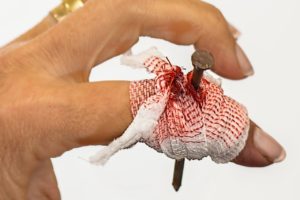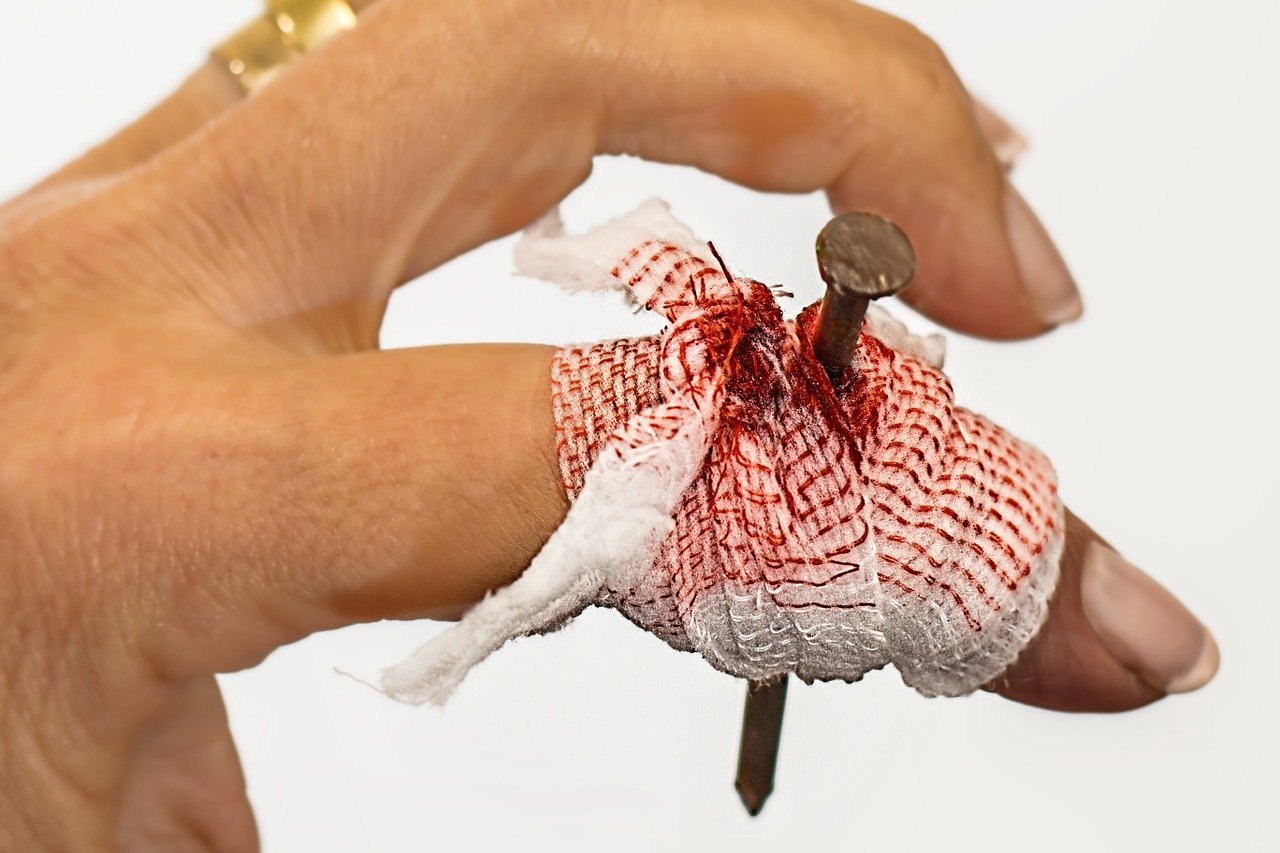Medical emergencies are deadly, grave or acute injury or illness that threatens a person’s life or long- health. Medical emergencies are sometimes referred to as ” life or limb”. Most medical emergencies require assistance from another as they cannot be overcomed or dealth with by the victims themselves. Medical emergencies are sudden, unexpected and downright scary regardless of how prepared and informed you are. Your action and inaction in some situations can be the determinant factor in the saving/losing of a life.
First aid boxes aren’t as popular as they used to be (I have only seen two all my life) and no one carries them around. We all pray not to witness those scenarios we usually see in movies but isn’t it better to pray and plan?
Causes Of Medical Emergencies
There are different causes of medical emergencies, some symptoms of certain medical crisis can overlap, some signs might even be vague. Identifying the common causes of medical emergencies might be crucial in saving of a life. The main causes of medical emergencies are;
1. Bleeding( cuts, wounds and internal injuries).
2. Respiratory difficulties ( Breathing, choking, strangulation, drowning).
3. Fainting.
4. Fit/ seizures.
5. Sever pain, burns and scalds.
6. Stroke.
7. Heat stroke.
8. Broken bones.
What To Do During Medical Emergencies?
There are various things you can do to help when medical emergencies arise.
For Bleeding(cuts and wounds)
A person cuts/deeply injures his/herself with a sharp object or is injured while riding a bike, as the case may be. What do you do next?
– Put pressure on the area with a tissue, clean cloth or gauze pad.
– Apply ice or cold water( it constricts the blood vessel thereby allowing clots to form more quickly.
– Elevate the site that is bleeding.
Note: most cuts and wounds should stop bleeding within 10minutes.
For Bleeding( internal)
– Lay the person down.
– Raise their legs above the level of their hearts.
– Do not give them anything to drink or eat.
– Rush them to the nearest hospital.
Note: internal bleeding should be handled by medical professionals, this is meant to keep them stable till help comes.
Respiratory Difficulties/Medical Emergencies
Imagine you’re on a bus, a person starts drawing gasps of breath but up to no avail. His face starts turning blue and panic is seen on his face.
What can you do to help?
For Choking:
– Encourage him to keep coughing to clear the blockage area.
-If coughing doesn’t work start giving back blows (5 sharp blows between his shoulder blades with the heel of your hands).
For Strangulation:
You have no idea who this person is. It’s late at night. You are at the corner of a street known for its gruelsome crime at night. There is a lady lying down 10 feet away. You go nearer, she’s unconscious.You turn on your flash lights. There are bruises on her neck and she doesn’t seem to be breathing fine. What do you do?
– Put an ice pack on her neck for 10- 20 minutes ( if there is any).
– Put a thin cloth between the ice and the victims skin.
– Rush the victim to the nearest hospital. For drowning
– If the victim is still breathing, he/she should be placed on their side to prevent potential aspiration.
– If the victim isn’t breathing, begin CPR( chest compressions).
– Rush the victim to the nearest hospital.
For Fainting
Fainting occurs when a person is not getting enough oxygen. The medical term for fainting is syncope. Fainting can happen for different reasons ( inserts previous bus scenario but this time the person faints, lol).
What do you do next?
– Raise their feet above the level of their heart.
– loosen restrictive clothing ( tight collars, belts e.t.c).
– Fan the victim. – keep the person lying down or sitting for at least 10-15 minutes.
– If he/ she does not wake up rush them to the nearest hospital.
For Fits/Seizures
Seizures can be very alarming to those who have never seen one happen before. So, on your way to work, you see a small gathering of people looking at a person who suddenly had a fit/seizure.
What should you do?
– Tell the crowd to give him space/ air to breathe by not surrounding him.
– Ease the person to the floor.
– Turn the person gently on one side to aid breathing.
– Clear the area of any sharp objects.
– Loosen ties or anything that makes it hard for them to breathe.
Note: If the fit/seizure lasts longer than five minutes rush the victim to the nearest hospital.
For Severe Pain, Burns And Scalds
Burns and scalds can really hurt. I know because it happened to me( yes, I cried). It left a big scar which wouldn’t have happened if I had gone to the hospital or at least read up on first aids done for burns and scalds.
What should I have done?
– I should have cooled the burn with cool or lukewarm water for 20minutes.
– I should have taken pain killers.
– Most importantly, I should have gotten medical care.
Heat stroke/sun stroke
Truth be told, I have never heard/seen a person suffer from heat stroke( and I live in Africa, the hottest region in the world), If you didn’t know that part what the hell are you doing reading this article? Anyways, heat strokes result from prolonged exposure to high temperatures(one would wonder how high it has to get).
Symptoms include, headache, dizziness, lack of sweating (weird, right?), muscle cramps.e.t.c.
First aid for victims are?
– Fan all over the patient while wetting their skin with water.
– Apply ice packs to the patients armpits, neck and back.
– Immerse the patient in a shower or ice bath.
– Get medical assistance.
For Stroke
Symptoms include, numb face and arms, slurred speech, blurred vision e.t.c. First aid for victims include:
– Make them comfortable.
– Check to see if they’re breathing, of not perform CPR.
– Keep them warm.
– Don’t give them anything to eat or drink. – Avoid moving them if they are showing weakness in a limb.
– Call 911.
For broken bones
Yes, you’ve probably seen a fractured arm or leg before or maybe the fractured arm/leg was yours ( okay, yes, I fractured my wrist once……and my leg too…not my proudest moments, trust me).
How can you help?
– Take clothing of the area (I did that!).
– Apply an ice pack wrappeed in cloth ( this one too!).
– Do not attempt to move/ reposition the limb ( two out of three is still a good score).
– Get medical care.
Conclusion – Medical Emergencies
While there are myriads and myriads of reasons for medical emergencies, these are the most common ones. I hope you enjoyed reading this article as much as I enjoyed writing it. Truth is you will probably read this and forget ( I don’t even remember every single thing I said).
So maybe a screenshot wouldn’t be that bad huh?

Writer: Yakubu Fame
Ambrose Ali University, Ekpoma, Edo State, Nigeria
Fame Yakubu is a professional at sparking emotions with words. A word-artist who paints pictures with the tip of his pen.Though young, he thinks and writes like one with enough experience to keep you forever glued to his write-ups. A Law student from Ondo State, Nigeria with a mind as boundless as his words.


A great write-up
Wow.
This is really nice and insightful.✌👌👣
I knew the writer would be a guy with all the accidents tho 😂😂😂😂😂😂😂
Wow….. A very eye opening write up.
Knowing what to do during emergency, where there is no doctor can really go a long way in saving life’s.
A very beautiful and beneficial article.❤️
Nice write up
Please note that 911 is the emergency number used in USA and Canada
Nigeria uses 112 or 999 for emergencies
Nice write-up.. and very educating…. Kudos.
Very nice, U don’t even need to tell me to take a screenshot,I was screenshotting as I was reading right from the beginning. Thanks for this, very interesting and helpful